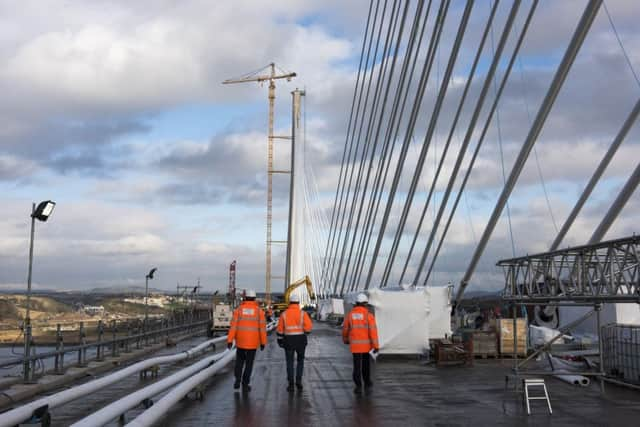Alastair Dalton: Handling bridge walk demand could be tricky


The 226,000 plus response is perhaps unsurprising considering Scotland’s biggest construction project for a generation has taken shape so prominently over the last six years.
There is also the “once in a lifetime” allure, since the bridge will be a motorway without public walkways, so closed to pedestrians.
Advertisement
Hide AdAdvertisement
Hide AdIn fact, it will have to be specially shut to all traffic, days after opening, so those 50,000 walkers can pound the carriageways on 2-3 September.
As one of the few lucky enough to have walked on the bridge, to write about its construction in February, it promises to be worth the trip.
For a start, there’s the unique new perspective of looking east across to the crossing’s older but shorter sister, the Forth Road Bridge, and the Victorian Forth Bridge beyond.
For those who have walked across the road bridge, the Queensferry Crossing will also be an entirely different experience because of the very different design of its deck.
While there is open steelwork between each of the carriageways and walkways of the Forth Road Bridge, so you can straight down to the river below, the new crossing has a sold deck all the way across, making it seem far wider.
This is partly because there will be a hard shoulder in addition to the two lanes in each direction, but also as there is no gap in the deck along the central reservation.
Windshielding protecting the carriageways should keep the bridge open in all but the most extreme gusts.
But in contrast with the width, those crossing the bridge are likely to also be struck by its slender towers, which they will pass on either side, rather than the chunky, angular towers of its neighbour, which the carriageways go through.
Advertisement
Hide AdAdvertisement
Hide AdWith all this interest, the crossing has almost become a victim of its own success, even two months before it opens.
That keenness to join the walks has been most keenly felt among those living nearest the bridge, with more than half of applications for tickets coming from postcodes in the vicinity.
But because initial demand has outstripped supply by more than four-and-a-half to one, a lot of people will be disappointed.
Even with the predicted drop-out rate, tens of thousands of locals will not get a ticket for possibly their only chance to walk on “their” bridge.
Many of these will be the same people who, officials acknowledge, have suffered years of disruption during the project, from diversions to extra construction traffic and mud spread across roads.
That was underlined by one official saying it was the roadworks either side of the bridge rather than the crossing itself that would be the tricky bit of the project.
The Scottish Government’s Transport Scotland agency is in a difficult position. After announcing two bad-weather delays already, keeping the bridge closed longer so more walkers to cross could put back its full opening further.
However, the Forth Road Bridge is no longer falling down, so the urgency of relieving it of traffic has been removed.
Advertisement
Hide AdAdvertisement
Hide AdThere could also be pressure once it’s clearer how many locals - and others - won’t get to set foot on Scotland’s new marvel.
An official opening ceremony may provide the opportunity for some of them to sample the bridge at first hand, but a tough job could lie ahead managing expectations.